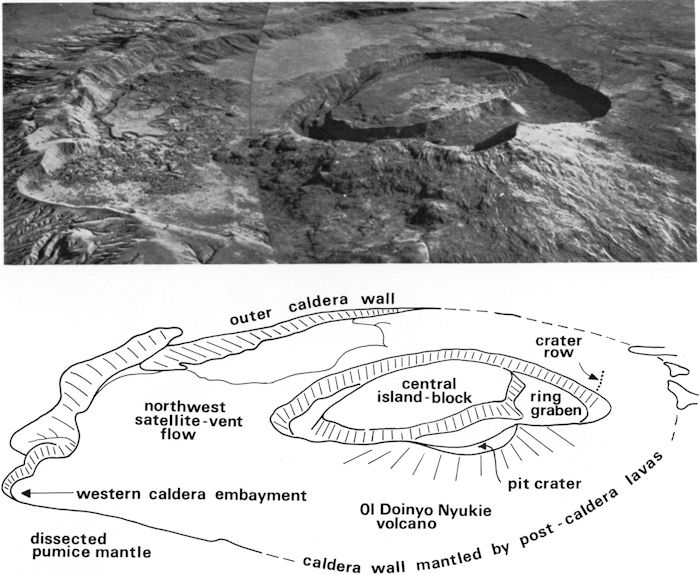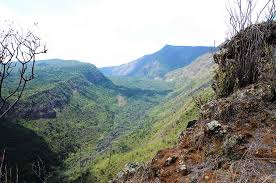Mount Suswa, nestled in Kenya’s Great Rift Valley, is one of East Africa’s best-kept secrets—a spectacular volcanic mountain famous for its breathtaking double-crater formation, expansive lava caves, lush ecosystems, and cultural experiences with local Maasai communities. Whether you’re an enthusiastic hiker, an adventurous camper, or just someone looking for an unforgettable weekend getaway, Mount Suswa promises an extraordinary experience.
🗺️ About Mount Suswa:
A Geological Marvel
Mount Suswa is a dormant shield volcano approximately 70 kilometers west of Nairobi, easily accessible via Mai Mahiu town. Rising to an altitude of 2,356 meters (7,730 feet), the mountain features one of Africa’s rarest geological formations—a stunning double crater, including:
- Outer Crater: Approximately 10 kilometers wide, offering expansive views of surrounding savannah and neighboring volcanoes.
- Inner Crater: Approximately 5 kilometers wide, lushly forested, home to diverse wildlife and at its heart, a dramatic volcanic plug known as Ol Doinyo Nyokie.
Mount Suswa last erupted over 200,000 years ago, leaving behind a fascinating landscape dotted with geothermal vents, extensive lava tube caves, and unique rock formations.
Why Visit Mt. Suswa
🌑 Suswa’s Unique Double-Crater Formation
Mount Suswa’s double crater is its most celebrated feature:
1. Outer Crater
The outer caldera, with its expansive savannah plains, offers stunning views and opportunities to observe wildlife and traditional Maasai life. Its grassy slopes provide excellent walking trails ideal for hikers of all levels.
2. Inner Crater
Hidden within the outer crater is an inner caldera, dramatically forested and lush. This inner crater is a sanctuary of biodiversity, sheltering numerous bird species, mammals, and plants unique to volcanic ecosystems. At its center is the striking volcanic plug— a rocky pinnacle that presents incredible photographic opportunities.

🦇 Explore the Legendary Lava Caves
Mount Suswa’s lava caves—formed by cooling lava flows—are an underground marvel. The cave system hosts the renowned “Baboon Parliament,” a chamber famous for its congregation of baboons and a vast colony of bats.
Visitors can explore these caves with knowledgeable local Maasai guides, discovering fascinating geological formations, hidden chambers, and learning traditional stories and cultural beliefs surrounding these mysterious caverns.
🥾 Hiking at Mount Suswa: Trails & Tips
Mount Suswa offers hiking trails suitable for all fitness levels. Key hiking routes include:
- Summit Trail (Highest Point – 2,356 m): A moderately challenging climb offering panoramic views of the Rift Valley and inner crater. Total hiking time: 3–4 hours round trip.
- Crater Rim Circuit: A scenic route around the entire crater rim (~22 km), typically taking 6–8 hours to complete. Expect incredible views and wildlife sightings.
Hiking Tips:
- Start Early: Begin hikes in the early morning (6–8 am) for cooler weather and optimal wildlife viewing.
- Carry Water: Bring at least 2–3 liters per person, as water is unavailable on trails.
- Wear Sturdy Footwear: Good hiking boots or strong sneakers with solid grip are essential.
- Hire a Local Guide: Local Maasai guides are highly recommended, providing safety, cultural insights, and trail navigation.
🏕️ Camping Under the Stars in Mount Suswa
Experience the magic of Suswa’s serene landscape by camping overnight along the crater rim. Campsites offer magnificent views over the double crater and the stunning Rift Valley.
Camping Essentials:
- Camping Fees: Typically KES 1,000 per adult, per night.
- Facilities: Basic camping areas; pit latrines provided. No running water—bring your own.
- Firewood: Available for purchase locally (KES 1,000 per bundle). Respect local environment—do not collect firewood from natural habitats.
- Gear Recommendations: Tents, sleeping bags, warm clothing (temperatures drop significantly at night), cooking gear, headlamps, and insect repellent.
🦅 Mt Suswa’s Wildlife & Biodiversity
Suswa is home to diverse wildlife adapted to its volcanic terrain:
- Mammals: Olive baboons, rock hyraxes, zebras, antelopes, and occasional giraffe sightings.
- Birdlife: An excellent destination for birdwatchers, home to augur buzzards, Verreaux’s eagles, secretary birds, and more.
- Vegetation: A fascinating gradient from dry savannah to lush crater forest.
Respect wildlife and practice “leave no trace” principles during your visit.
🚗 Getting to Mount Suswa: Directions & Access
Mount Suswa is approximately 1½ hours drive from Nairobi via Mai Mahiu:
- Self-Drive: Take the Nairobi–Narok Road via Mai Mahiu. Follow clear signs for Mount Suswa Conservancy.
- Public Transport: Take matatus or buses to Mai Mahiu town, then arrange local transport (motorbike or taxi) to the park entrance.
- Vehicle Recommendations: 4WD vehicles are highly recommended, especially in the rainy season.
💵 Mount Suswa Entrance Fees & Costs (2025)
| Fee Category | Cost |
|---|---|
| Citizens | KES 500 |
| Residents | KES 1,000 |
| Non-Residents | USD 30 |
| Children (Citizen/Resident) | KES 300 |
| Children (Non-Resident) | USD 10 |
| Vehicle Fee | KES 500 (car); KES 300 (bike) |
| Overnight Camping | KES 1,000 per adult/night |
| Firewood | KES 1,000 per bundle |
| Maasai Cultural Stay | KES 4,500 per person/night |
Note: Guiding fees vary based on group size and chosen activities.
🌟 Responsible Travel & Sustainability in Mt Suswa
MtSuswa.org supports sustainable, community-based tourism. When you visit, your fees directly contribute to local conservation projects and Maasai community initiatives.
- Support Locally: Hire local Maasai guides and purchase handmade crafts.
- Respect Culture: Engage with cultural activities respectfully.
- Protect the Environment: Follow “Leave No Trace” principles—pack out all trash.
🛎️ Plan Your Suswa Visit Today
Whether for a weekend escape, adventurous hiking, cave explorations, cultural immersion, or wildlife photography—Mount Suswa offers an unforgettable volcanic adventure close to Nairobi.
Let MtSuswa.org guide you through planning your trip—from maps and detailed hiking routes to camping tips and local contacts. Explore Kenya’s hidden volcanic gem and experience the magic of Mount Suswa firsthand.
Adventure awaits—visit Mount Suswa today!
Who Owns Mt. Suswa
Mount Suswa is not owned by the Kenyan government or managed by a formal national…
Geothermal Activity at Mt. Suswa
🔥 Overview Mount Suswa, located in Kenya’s Great Rift Valley, is a dormant shield volcano…
Are there Hot Springs in Mt Suswa?
🌋 Short Answer: No, Mount Suswa does not have visible, open-air hot springs like those…
Formation
Mount Suswa’s distinctive shape—with a double caldera structure (an outer and inner crater)—is the result…
Elevation
Mount Suswa rises to an elevation of 2,356 meters (7,730 feet) above sea level, making…
How to Get to Mount Suswa from Nairobi Using the SGR Train
Mount Suswa, known for its twin calderas, lava caves, and off-grid adventure, is one of…
🏔️ Mount Suswa vs Mount Longonot: A Complete Guide
Having gone hiking in both Mt. Longonot and Mt. Suswa, I can confidently say that…
Is Mt. Suswa Active Volcano?
An Expert Geological Perspective ✅ Short Answer: Mount Suswa is a dormant—but potentially active—volcano. 🔬…
Exciting News: Mt. Suswa to Welcome New Camp by Kambu Campers!
We’re thrilled to announce that Mount Suswa will soon be home to a new camp…
When Did Mt. Suswa Erupt?
Mount Suswa last erupted during the late Holocene, with the most recent eruptive activity likely…
The Geological History and Evolution of Mt. Suswa
Overview Mount Suswa is a unique, double-caldera volcano located in Kenya’s Gregory Rift Valley, part…
How to Get to Mount Suswa
Mount Suswa is a captivating volcanic mountain located within Kenya’s scenic Great Rift Valley, easily…
Geography and Elevation
ount Suswa is a spectacular volcanic mountain nestled in Kenya’s Great Rift Valley, renowned for…
Camping & Accommodation in Mount Suswa
Mount Suswa is the kind of place where the sky feels closer, the nights are…
Mount Suswa Adventures & Activities: How to Explore Kenya’s Wildest Volcano
Mount Suswa is more than just a mountain — it’s a playground of lava-sculpted wonders,…
Hiking Mount Suswa in 2025: The Ultimate Trail Guide
Mount Suswa isn’t your average volcano. It’s a rugged, double-crater marvel full of hidden forests,…
Mount Suswa Geology & Geography: Kenya’s Twin-Crater Volcanic Marvel
Mount Suswa is a hidden geological treasure in Kenya’s southern Rift Valley. While often overshadowed…
Sustainable Travel in Mount Suswa: How to Visit Responsibly and Leave it Better
Mount Suswa offers one of Kenya’s last truly wild and untamed landscapes — a double…
Top Attractions Near Mount Suswa: Exploring Beyond the Crater
Mount Suswa is an epic destination in its own right — but it also sits…
Photography in Mount Suswa
With its layered craters, lava caves, steaming vents, wild landscapes, and dramatic light, Mount Suswa…
Mount Suswa for Families
Mount Suswa may be famous for its rugged volcanic terrain and adventurous hiking, but it’s…
Inside the Baboon Parliament: The Volcanic Chamber Where Nature Holds Court
Step into the shadowed throat of Mount Suswa, and the landscape begins to shift. Above…
Geology of Mount Suswa
Mount Suswa is not only one of Kenya’s most visually striking volcanic formations — it’s…
Wildlife/Animals in Mt Suswa
Mount Suswa is not a traditional safari destination. It has no game drives, ranger posts,…
The Best Time to Visit Mount Suswa
Mount Suswa is a year-round destination, but your experience will vary depending on weather, accessibility,…
Top 12 Things to Do in Mount Suswa
Nestled in Kenya’s Great Rift Valley, Mount Suswa is one of the country’s most dramatic…
Camping at Mount Suswa
Tucked into the floor of the Great Rift Valley, Mount Suswa isn’t your average camping…
Complete Guide to Mount Suswa Conservancy
Tucked deep in the Great Rift Valley, Mount Suswa Conservancy is one of Kenya’s most…
The Hidden Gems of Mount Suswa: Secret Spots, Wildlife, Viewpoints & Untold Wonders
Mount Suswa is already off the beaten path — but dig a little deeper and…
How I Ended Up on the Rim of a Volcano: My Unforgettable Hike at Mount Suswa
By Sam – Nairobi-based expat, wanderer, and reluctant morning person When I checked into Kambu…

